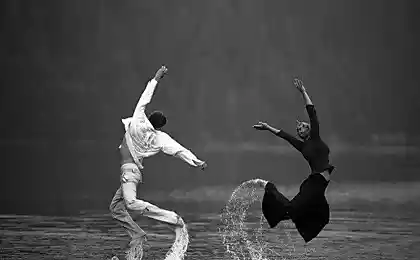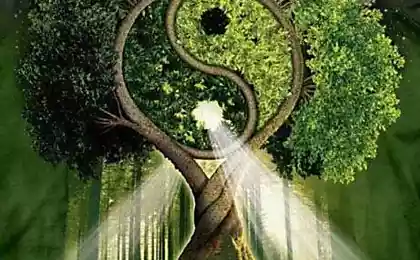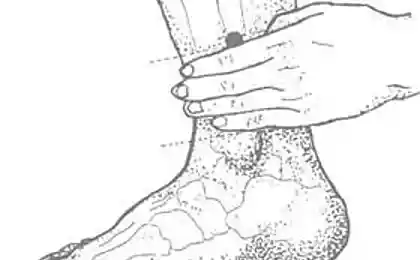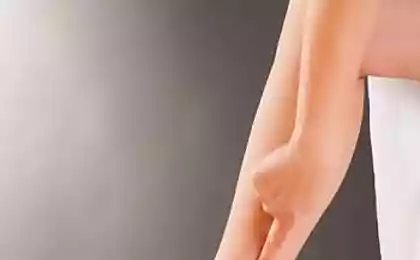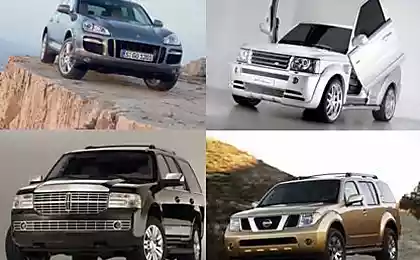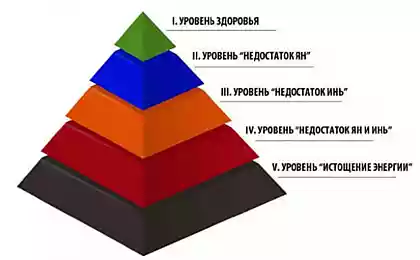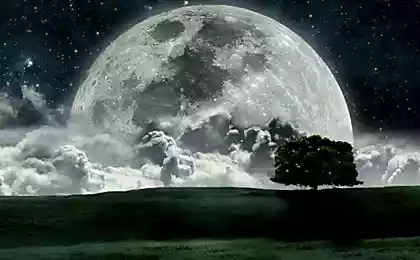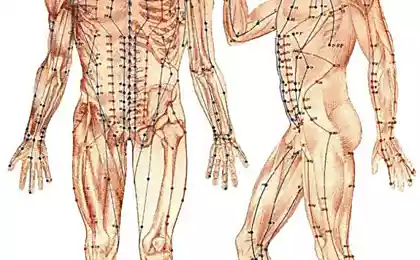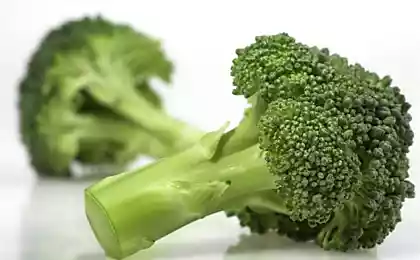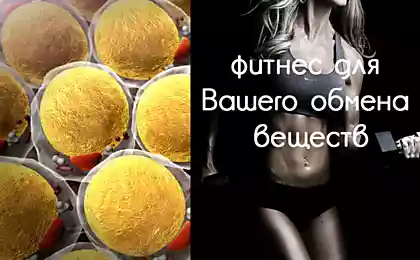652
9 constitutional types: the level of human health
9 CONSTITUTIONAL TYPES
Knowing his Constitution, so we can organize your life to eliminate the risks of developing diseases and to strengthen these "weak spots" in our body, embodying the main idea of prevention: "you need to take care of his health for three years prior to the development of the disease, and not three hours before death"
"If we learn to adjust their Constitution, we will be able to prevent the development of disease and ensure a long, happy life." S. Zaitsev
WHAT IS THE CONSTITUTIONAL TYPE, AND AS A RESULT IT IS FORMED
Our individual constitutional type is formed as a result of exposure on our bodies many different factors, which can be divided into two groups:
Congenital factors:
WHAT ARE the CONSTITUTIONAL TYPESOffer one of the classifications, according to which 9 is allocated the classical constitutional types that can be combined in 4 groups:
Group I: constitutionnelle types of stagnation energy and stagnation of blood
This group includes two constitutional type: the type of stagnation of energy and the type of stagnation of blood. It is believed that the formation of constitutional types of stagnation initially there is stagnation of energy, which quickly leads to stagnation of blood, so usually these two types are considered together. However, the possible formation of the primary blood stasis, which then leads to stagnation of energy. This situation is most characteristic for injuries of blood vessels: mechanical damage, exposure to high or low temperatures, damage to the blood vessels chemicals.
Group II: constitutional type of excess energy
This group includes constitutional types, in which the body creates the conditions that generate abnormally high level of energy. Usually in these cases, there is "overproduction" energy type-Yang (active energy), therefore, speaking about a constitutional type of excess, we're talking about the excess Yang energies and the excess of Yang.
Group III: constitutional types of pathological accumulations of body fluids (phlegm, mucus, moisture)
This group includes two constitutional type:
The hot humid type – the type of energy in which the body is the formation of clusters of hot moisture due to the lack of energy (weakness) of the pancreas – "the mother of all body fluids" and a sufficiently high overall energy level.
Damp cold type – type of energy, wherein the body is formed of accumulations of cold water due to weakness of the pancreas and low levels of energy due to weakness of the lungs, which are responsible for the formation of energy in our body.
Group IV: constitutional types of emptiness (lack) of energy and blood
This group includes three types of void energy and the type of void blood:
The emptiness of the universal energy Qi. This refers to a congenital defect or a hereditary desolation of energy (yuan Qi). This energy a person receives from their parents. It is intended to implement the programme of human life (what will it be, how long to live, what to do, etc.), recorded in his genes, and to transmit to posterity in sufficient quantity and of adequate quality.
Emptiness of Yin. This refers to the insufficiency of nourishing energy (Ying-Qi), which provides power to cells and tissues, their reserve capacity and sustainability (accumulation, storage and rational use of reserves of life). In other words, the emptiness of Yin, you can compare with the devastation of "banking reserves" of the cells
Emptiness of YANG energy. This refers to the insufficiency of the energy of activity (Yang-Qi), providing the ability of body cells to act, to function, to synthesize biologically active substances, i.e. to perform their duties in the body. In other words, the emptiness of Yang can be compared to the state of incapacity of cells, organs or systems
The emptiness of the blood is on the one hand the deficiency of blood (anemia), and the other – inability of the blood to effectively carry out their transport functions due to changes its properties: blood clots, a change in its physico-chemical properties (blood pH, surface charge of red blood cells, platelets, chemical composition of blood plasma, etc.)
Each constitutional type is characterized by certain features of energy, which is reflected in the structure and functioning of the organism, its lifespan and rate of aging, as well as determines the appearance data of the person and determines the risk of development characteristic of this disease (figure 1).
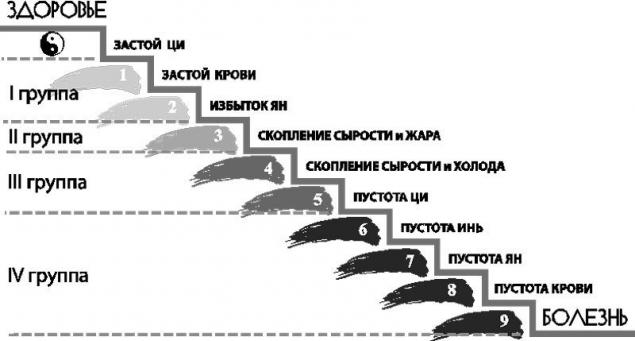
Fig. 1. 4 groups and 9 constitutional types
Below is table 1, describing the main characteristics of one or another constitutional type with a conditional assessment of the level of health inherent in each type.
Table 1
CHARACTERISTIC OF THE CLASSIC CONSTITUTIONAL TYPES
Constitutional type
Group
Features energy
"The weakest link" (channel, on)
Health
(in points)
1 type:
stagnant energy
I
the tendency to delay the movement of energy, stagnant energy, overheating of the body, the perversion of the course of energy, metabolic chaos
gallbladder
9
2 type:
blood stasis
the tendency to delay movement of blood, the congestion and thickening of the blood, blood clots, malnutrition and cleansing organs
liver
8
3 type:
the excess energy
II
the tendency to increase the production and consumption of energy, depletion of energy resources, the rapid "burnout" of the body
heart
7
4 type:
hot damp (accumulation
hot moisture)
III
the tendency to the formation of zones with an excess of energy and moisture, inflammation, systemic allergic reactions, formation of stones, salt deposition
pancreas
6
5 type:
cold damp (accumulation of cold water)
the tendency to form zones with lack of energy and moisture, accumulation of mucus, edema, atherosclerosis, obesity, the decline in the function of internal organs
light
5
6 type:
emptiness of Qi energy
IV
lack of energy in the body, chronic fatigue syndrome, lack of exercise, depression, apathy, decrease of adaptation
bladder
4
7 type:
emptiness of Yin
the destabilization of the system imbalance energy with the prevalence of its consumption, depletion of the organs, suppression of synthesis of biologically active substances, the formation of the syndrome of "empty fire" – "the dying fire"
the pericardium
3
8 type:
emptiness of Yang
the lack of energy required to support the activities of organs and systems, slowing the work pace of the organs, sluggish energy, "cooling" of the body
triple heater
2
9 type:
emptiness of blood
the lack of energy in the blood system, atrophy, degeneration, organs, anemia, decreased activity of protective forces of an organism, previously, the aging of the body
kidney
1
The emergence and development of each constitutional type has its own causes, characteristic manifestations, can become the basis for the development of characteristic diseases and requires certain methods of correction outlined in the four strategies of Chinese medicine that allows you to:
P. S. And remember, just changing your mind - together we change the world! ©
Source: shuboshi4.ru/blogs/blog-china/teoriya-devyati-konstitutsionalnyh-tipov
Knowing his Constitution, so we can organize your life to eliminate the risks of developing diseases and to strengthen these "weak spots" in our body, embodying the main idea of prevention: "you need to take care of his health for three years prior to the development of the disease, and not three hours before death"
"If we learn to adjust their Constitution, we will be able to prevent the development of disease and ensure a long, happy life." S. Zaitsev
WHAT IS THE CONSTITUTIONAL TYPE, AND AS A RESULT IT IS FORMED
Our individual constitutional type is formed as a result of exposure on our bodies many different factors, which can be divided into two groups:
Congenital factors:
- Heredity: individual genetic characteristics we inherit features from our parents energy, especially energy inherent in our ancestors (karma)
i.e. the information contained in the genes of our ancestors - Racial features: group genetic features, i.e. features energy large groups of people, who were treated by our parents
- The terms conception: the state of the external energy caused by climatic area, season, solar and lunar rhythm of external energies, and the energy state of the parents at the moment of conception
- Pregnancy: living conditions, nutrition and the behavior of the mother, features of family relationships and the attitude towards the unborn baby
- The conditions for the birth of the child
- Living conditions, diet, physical regime, habits, stereotypes
- Climatic and ecological conditions in the area of residence and production
- The social environmentin which the child develops and lives an adult: family, friends, neighbors, social position, including the profession, career prospects for social development, etc.
- Psychological characteristics of a person: appropriate response to stress (intensity, color, duration), ability to communication (ability to communicate), etc.
- Illness and injuries and their treatment
WHAT ARE the CONSTITUTIONAL TYPESOffer one of the classifications, according to which 9 is allocated the classical constitutional types that can be combined in 4 groups:
Group I: constitutionnelle types of stagnation energy and stagnation of blood
This group includes two constitutional type: the type of stagnation of energy and the type of stagnation of blood. It is believed that the formation of constitutional types of stagnation initially there is stagnation of energy, which quickly leads to stagnation of blood, so usually these two types are considered together. However, the possible formation of the primary blood stasis, which then leads to stagnation of energy. This situation is most characteristic for injuries of blood vessels: mechanical damage, exposure to high or low temperatures, damage to the blood vessels chemicals.
Group II: constitutional type of excess energy
This group includes constitutional types, in which the body creates the conditions that generate abnormally high level of energy. Usually in these cases, there is "overproduction" energy type-Yang (active energy), therefore, speaking about a constitutional type of excess, we're talking about the excess Yang energies and the excess of Yang.
Group III: constitutional types of pathological accumulations of body fluids (phlegm, mucus, moisture)
This group includes two constitutional type:
The hot humid type – the type of energy in which the body is the formation of clusters of hot moisture due to the lack of energy (weakness) of the pancreas – "the mother of all body fluids" and a sufficiently high overall energy level.
Damp cold type – type of energy, wherein the body is formed of accumulations of cold water due to weakness of the pancreas and low levels of energy due to weakness of the lungs, which are responsible for the formation of energy in our body.
Group IV: constitutional types of emptiness (lack) of energy and blood
This group includes three types of void energy and the type of void blood:
The emptiness of the universal energy Qi. This refers to a congenital defect or a hereditary desolation of energy (yuan Qi). This energy a person receives from their parents. It is intended to implement the programme of human life (what will it be, how long to live, what to do, etc.), recorded in his genes, and to transmit to posterity in sufficient quantity and of adequate quality.
Emptiness of Yin. This refers to the insufficiency of nourishing energy (Ying-Qi), which provides power to cells and tissues, their reserve capacity and sustainability (accumulation, storage and rational use of reserves of life). In other words, the emptiness of Yin, you can compare with the devastation of "banking reserves" of the cells
Emptiness of YANG energy. This refers to the insufficiency of the energy of activity (Yang-Qi), providing the ability of body cells to act, to function, to synthesize biologically active substances, i.e. to perform their duties in the body. In other words, the emptiness of Yang can be compared to the state of incapacity of cells, organs or systems
The emptiness of the blood is on the one hand the deficiency of blood (anemia), and the other – inability of the blood to effectively carry out their transport functions due to changes its properties: blood clots, a change in its physico-chemical properties (blood pH, surface charge of red blood cells, platelets, chemical composition of blood plasma, etc.)
Each constitutional type is characterized by certain features of energy, which is reflected in the structure and functioning of the organism, its lifespan and rate of aging, as well as determines the appearance data of the person and determines the risk of development characteristic of this disease (figure 1).

Fig. 1. 4 groups and 9 constitutional types
Below is table 1, describing the main characteristics of one or another constitutional type with a conditional assessment of the level of health inherent in each type.
Table 1
CHARACTERISTIC OF THE CLASSIC CONSTITUTIONAL TYPES
Constitutional type
Group
Features energy
"The weakest link" (channel, on)
Health
(in points)
1 type:
stagnant energy
I
the tendency to delay the movement of energy, stagnant energy, overheating of the body, the perversion of the course of energy, metabolic chaos
gallbladder
9
2 type:
blood stasis
the tendency to delay movement of blood, the congestion and thickening of the blood, blood clots, malnutrition and cleansing organs
liver
8
3 type:
the excess energy
II
the tendency to increase the production and consumption of energy, depletion of energy resources, the rapid "burnout" of the body
heart
7
4 type:
hot damp (accumulation
hot moisture)
III
the tendency to the formation of zones with an excess of energy and moisture, inflammation, systemic allergic reactions, formation of stones, salt deposition
pancreas
6
5 type:
cold damp (accumulation of cold water)
the tendency to form zones with lack of energy and moisture, accumulation of mucus, edema, atherosclerosis, obesity, the decline in the function of internal organs
light
5
6 type:
emptiness of Qi energy
IV
lack of energy in the body, chronic fatigue syndrome, lack of exercise, depression, apathy, decrease of adaptation
bladder
4
7 type:
emptiness of Yin
the destabilization of the system imbalance energy with the prevalence of its consumption, depletion of the organs, suppression of synthesis of biologically active substances, the formation of the syndrome of "empty fire" – "the dying fire"
the pericardium
3
8 type:
emptiness of Yang
the lack of energy required to support the activities of organs and systems, slowing the work pace of the organs, sluggish energy, "cooling" of the body
triple heater
2
9 type:
emptiness of blood
the lack of energy in the blood system, atrophy, degeneration, organs, anemia, decreased activity of protective forces of an organism, previously, the aging of the body
kidney
1
The emergence and development of each constitutional type has its own causes, characteristic manifestations, can become the basis for the development of characteristic diseases and requires certain methods of correction outlined in the four strategies of Chinese medicine that allows you to:
- To define your own type and energy of the Constitution, bearing in mind that each person has individual characteristics of its own power and its constitutional type can contain elements of several classic types of power the Constitution;
- Identification of the most vulnerable organs and systems of your body;
- To clarify the risks of developing distinctive diseases, inherent to a particular type of Constitution to determine which organs and systems can be the "weak link" in his body;
- On the basis of the recommendations set out in the four strategies of Chinese medicine can make an adequate individual program of recovery, preservation and strengthening of their health, as well as addressing the underlying risk characteristic of disease that is tailored to your own constitutional type. This program can include recommendations for the correction of the energy, on the organization of corrective nutrition, adequate movement regime, etc.;
- To identify root causes of existing chronic diseases due to the presence of energy imbalance that will help or completely eliminate these diseases, or make them easier for with the help of the recommendations contained in the four strategies of Chinese medicine;
- If you wish to carry out an effective correction of their appearance taking into account the problems caused by the presence of one or another constitutional type;
- Rational use recommendations seasonal therapy in accordance with the type of own energy Constitution. published
P. S. And remember, just changing your mind - together we change the world! ©
Source: shuboshi4.ru/blogs/blog-china/teoriya-devyati-konstitutsionalnyh-tipov
